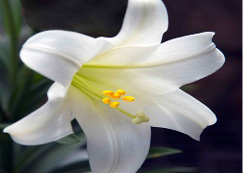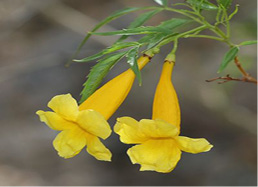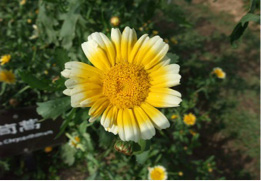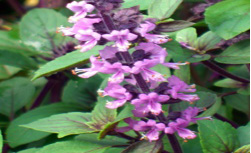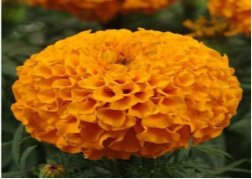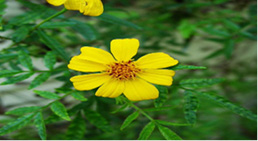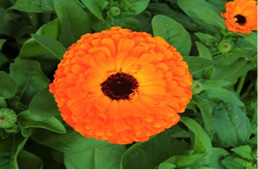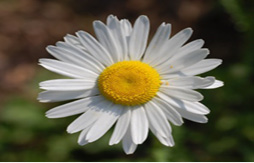Comparative Toxicity of Methanolic Extracts of some Indigenous and Exotic Flowers against Subterranean Termites Odontotermes obesus (Isoptera: Termitidae)
Comparative Toxicity of Methanolic Extracts of some Indigenous and Exotic Flowers against Subterranean Termites Odontotermes obesus (Isoptera: Termitidae)
Muhammad Shahzad Akbar*, Maria Aslam, Muhammad Rehan Khalid, Shahid Iqbal, Muhammad Luqman and Muhammad Zeeshan Majeed
College of Agriculture, University of Sargodha, 40100, Sargodha, Pakistan.
Abstract | Subterranean termites are destructive pests and cause massive damage to agricultural crops, forest plantations, wooden infrastructures and other cellulosic products. Their control is usually done by the application of highly persistent synthetic insecticides which often cause different non-target effects such as environment contamination. This laboratory study evaluated the toxicity of methanolic extracts of eight flowers i.e. Mexican marigold (Tagetes lucida), African marigold (Tegates erecta), tecoma (Tecoma stans), calendula (Calendula officinalis), basil (Ocimum basilicum), oxeye daisy (Leucanthemum vulgare), lily (Lilium longiflorum) and chrysanthemum (Glebionis segetum) against the worker individuals of subterranean termite Odontotermes obesus (Isoptera: Termitidae). Bioassays were conducted using filter paper disc method according to completely randomized design with four replications for each treatment. Termite mortality data was recorded at 6, 12, 24 and 48 h post-treatment. Median lethal concentration (LC50) and median lethal time (LT50) values were calculated for each treatment using log-dose probit analysis. Results revealed a mortality response of termites directly proportional to the extract concentration for all treatments. The floral extracts of basil (O. basilicum) and Tecoma (T. stans) exhibited maximum termite mortality (i.e. 55.5 and 50.0%, respectively) with minimum LC50 and LT50 values, followed by the extracts of chrysanthemum (G. segetum) and African marigold (T. erecta). Overall study results suggest that above mentioned floral extracts can be further characterized for potential botanical pesticide formulations against insect pests such as subterranean termites.
Received | May 26, 2019; Accepted | June 24, 2019; Published | October 26, 2019
*Correspondence | Muhammad Shahzad Akbar, College of Agriculture, University of Sargodha, 40100, Sargodha, Pakistan; Email: [email protected]
Citation | Akbar, M.S., M. Aslam, M.R. Khalid, S. Iqbal, M. Luqman and M.Z. Majeed. 2019. Comparative toxicity of methanolic extracts of some indigenous and exotic flowers against subterranean termites Odontotermes obesus (Isoptera: Termitidae). Pakistan Journal of Agricultural Research, 32(4): 636-641.
DOI | http://dx.doi.org/10.17582/journal.pjar/2019/32.4.636.641
Keywords | Subterranean termites, Odontotermes obesus, Floral extracts, Toxicity potential, Ocimum basilicum, Tecoma stans
Introduction
With about 3,200 described species, termites are an important fauna of tropical and subtropical ecosystems. These edaphic invertebrates play an essential role in the organic matter decomposition and nutrients turnover in soil. However, some subterranean termite species are destructive pests of agricultural and urban settings. For instance, Odontotermes and Microtermes are two important genera of subterranean termites which cause massive damage to building materials, agricultural crops and forest plantations (Constantino, 2002; Ahmed et al., 2013).
In Indo-Pak region, control of subterranean termite’s infestation is primarily done by the application of different conventional synthetic insecticides (Lee and Ryu, 2003; Ahmed et al., 2006; Manzoor et al., 2012). In Pakistan, a number of synthetic insecticides are used against termites in the field or in urban settings irrespective of any scientific base, soil or structure type and termite species (Ahmed et al., 2006). Residues of most of these insecticides are highly persistent and accumulate in the soil and treated surface causing environmental contamination and human health hazards (Verma et al., 2009; Edwards, 2013).
Hence, there is a need to switch towards alternate termite control strategies which would be more biorational and environment-friendly and less-persistent than synthetic insecticides. Plant-derived extracts, for instance, emerge as promising biorational pest management tools. Botanical extracts of various plants have been found effective in controlling a wide number of insect pest species (Dodia et al., 2010). These plant extracts usually contain various metabolites such as alkaloids, flavonoids, tannins, terpenoids and saponins exhibiting anti-insect properties (Isman, 2006; Dodia et al., 2010). Some studies have shown anti-termitic properties of different plant extracts (Bläske and Hertel, 2001; Ding and Hu, 2010). However, these previous studies regarding the evaluation of insecticidal potential of botanicals have focused on the extracts of different plant parts such as roots, stems, shoots, leaves and fruits (Verma et al., 2009; Dodia et al., 2010). Very few studies have demonstrated the toxicity of flower extracts, although one study by Rao et al. (1957) showed the toxicity of petal extracts of different medicinal plants of India against rice weevil Sitophilus oryzae. Similarly, Badshah et al. (2004) demonstrated that crude floral extract of Calotropis procera was more toxic to subterranean termites (Heterotermes indicola and Coptotermes heimi) than its leave extract. Moreover, pyrethrin, a well-known natural botanical insecticide on which the synthetic pyrethroids are based, is also extracted from the petals of Chrysanthemum cinerariifolium flowers (Krief et al., 2009). Therefore, this laboratory study was aimed to evaluate the toxicity potential of floral extracts of eight indigenous and exotic ornamental plants against worker individuals of subterranean termite Odontotermes obesus.
Materials and Methods
Termite collection and maintenance
Intact parts of a subsurface colony of subterranean termite O. obesus were collected manually from the underside of an infested wood log and were brought to the laboratory of the Department of Entomology, College of Agriculture, University of Sargodha. For acclimatization of termite individuals to laboratory conditions, the termitarium (termite nest) parts containing hundreds of termite individuals were maintained for few days in a 1.5 ft2 glass cube in dark conditions at 26±2°C temperature and 65±5% relative humidity. Only healthy and active termite individuals were utilized in bioassays.
Collection and extraction of flowers
Fresh flowers, cut from the pedicel level, of eight different indigenous and exotic ornamental plants, as detailed in Table 1, were collected from the flower markets of Sargodha district and were identified up to species level by an expert florist. These whole flowers were shade dried for 7 to 10 days and then were grinded into fine powder by an electric blender. Extraction of these floral powders was carried out with the help of Soxhlet apparatus in the laboratory of the Department of Food Science and Technology, University of Sargodha. For extraction, methanol was used as extraction solvent with a 1:10 (w/w) ratio and solvent was evaporated from the crude extract with the help of an electrical shaker in order to get more pure crude extracts. All floral extracts were placed in dark coloured hermetic glass vials in the refrigerator (at 4°C) until their further utilization in toxicity bioassays.
Toxicity bioassay
Methanolic floral extracts were bio assayed against O. obesus termite individuals using standard filter paper disc method. Treatments included four concentrations of each floral extract i.e. 5, 10, 20 and 40% along with one control treatment. Filter paper discs were dipped for 5 – 10 sec in the treatment solutions and were allowed to air dry for 15 to 20 min after setting them in 9 cm Perti-plates over 2-3 mm thick layer of 1.5% agar. Control treatment was composed of tab water used to prepare other treatment solutions. Ten healthy and active termite individuals (9 workers and 1 soldier) were released with camel hair brush on the treated filter paper disc in each Petri-plate and were incubated in dark at 27±2°C temperature and 65±5% relative humidity. Data of termite mortality was recorded at 6, 12, 24 and 48 hours post-treatment. Moribund insects were counted as dead ones. Experimental design was completely randomized with five replications for each treatment.
Table 1: Different floral species bioassayed for their toxicity potential against subterranean termites Odontotermes obesus.
| Botanical name | Common/Vernacular name | Family | Potential Insecticidal components | Floral phenotypes used for extraction |
| Lilium longiflorum | Lily | Liliaceae | Kaempferol |
|
| Tecoma stans | Tecoma | Bignoniaceae | Alkaloid, tannins, Saponins, Flavonoids |
|
| Glebionis segetum | Chrysanthemum | Asteraceae | Luteolin, Apigenin |
|
| Ocimum basilicum | Basil | Lamiaceace |
Linalool, α –bergamotene |
|
| Tagetes erecta | African Marigold | Asteraceae | Terpenoid, Thienyls, Ocimenone, Ocimene |
|
| Tagetes lucida | Mexican marigold | Asteraceae | Coumarin |
|
| Calendula officinalis | Calendula | Asteraceae | Triterpinoid, Faradiol |
|
| Leucanthemum vulgare | Oxeye daisy | Asteraceae | Caryophyllene, Alkanoids |
|
Statistical analysis
Statistical analysis of data was done using Statistix® 8.1 software. Treatment means were compared using one-way factorial analysis of variance (ANOVA) followed by least significant difference (LSD) test at 0.05 level of probability. Moreover, median lethal concentration (LC50) and median lethal time (LT50) values were calculated by log-dose probit analysis using Polo® Software.
Results and Discussion
Results of the bioassay revealed that termite mortality was directly proportional to treatment concentration and time intervals. According to one-way factorial ANOVA, there was a significant effect of treatments (F7, 160 = 60.88; p < 0.001), observation time (F4, 160 = 1918.63; p < 0.001) and their interaction (F28, 160 = 6.55; p < 0.001) on the mean mortality of termite individuals exposed to different concentration of floral extracts. Maximum mean mortality (55.5%) was exhibited by the methanolic extract of O. basilicum (basil flowers), followed by T. stans (tecoma flowers) (50.50%) and C. officinalis (calendula flowers) (48.10%) (Figure 1). The floral extract of T. erecta (African marigold) was least effective against O. obesus individuals exhibiting 33.65% mean mortality, followed by the extracts of L. longiflorum (lily flowers) (39.8%) and T. lucida (Mexican marigold). Similar trend of termites mortality was recorded for each observation time as well (Figure 2). Maximum mortality (i.e. 83.5%) was recorded by the extracts of O. basilicum and T. stans at 48 h post-exposure, while minimum (i.e. 12.3%) was recorded for T. erecta extract at 6 h interval (Figure 2).
Probit analysis showed similar trend of toxicity of floral extracts as reflected by the analysis of variance. Minimum LC50 and LT50 values were recorded for all treatments respectively at maximum time interval (48 h) and maximum treatment concentration (40%). The most effective floral extracts were of T. stans and O. basilicum with minimum LC50 values (i.e. 1.8 and 4.33%, respectively) at 48 h (Table 2).
Table 2: Median lethal concentration (LC50) values of different floral extracts evaluated against subterranean termites Odontotermes obesus.
| Treatment | Time (h) | LC50 (%) | 95% Fiducial Limit | Slope ± SE | X2 d.f. (14) | P- value |
| Lilium longiflorum |
12 |
70.8 |
45.4-164.7 | 0.95±0.10 |
29.9 |
0.079 |
|
24 |
18.7 |
14-27.5 | 1.08±0.97 |
56.1 |
0.099 |
|
|
48 |
9.9 |
1.0-7.4 | 0.96±0.97 |
27.9 |
0.060 |
|
|
Tecoma stans |
12 |
80.0 |
50.5-170 | 0.95±0.10 |
69.7 |
0.85 |
|
24 |
9 |
6.5-11.4 | 1.08±0.97 |
26.6 |
0.063 |
|
|
48 |
1.8 |
0.2-4.4 | 0.96±0.97 |
94.8 |
0.031 |
|
| Glebionis segetum |
12 |
21.4 |
18.2-26.1 | 0.95±0.10 |
19.9 |
0.028 |
|
24 |
5.7 |
7.6-98.8 | 1.08±0.97 |
20.9 |
0.050 |
|
|
48 |
4.7 |
3.0-6.2 |
0.96±0.97 |
22.5 |
0.060 |
|
|
Ocimum basilicum |
12 |
11.07 |
18.2-26.1 |
0.95±0.10 |
14.8 |
0.025 |
|
24 |
6.1 |
7.6-98.8 |
1.08±0.97 |
39.3 |
0.052 |
|
|
48 |
4.33 |
3.0-6.2 |
0.96±0.97 |
45.3 |
0.047 |
|
| Tegates erecta |
12 |
9.2 |
6.8-11.6 |
0.95±0.10 |
32.9 |
0.057 |
|
24 |
5.8 |
4.2-7.2 |
1.08±0.97 |
24.9 |
0.038 |
|
|
48 |
4.93 |
3.4-6.2 |
0.96±0.97 |
40.5 |
0.043 |
|
|
Tagetes lucida |
12 |
22.3 |
15.5-20.4 |
0.95±0.10 |
44.7 |
0.54 |
|
24 |
10.5 |
8.9-12.1 |
1.08±0.97 |
13.8 |
0.023 |
|
|
48 |
6.8 |
5.4-8.1 |
0.96±0.97 |
24.8 |
0.028 |
|
| Calendula officinalis |
12 |
26.4 |
22.1-33 |
0.95±0.10 |
14.8 |
0.028 |
|
24 |
14.1 |
11.5-17.3 |
1.08±0.97 |
22.9 |
0.044 |
|
|
48 |
5.1 |
2.6-7.4 |
0.96±0.97 |
38.4 |
0.097 |
|
|
Leucanthemum vulgare |
12 |
21.8 |
18.8-25.9 |
1.17±0.09 |
15.0 |
0.023 |
|
24 |
10.3 |
1.21-31.1 |
1.11±0.08 |
15.5 |
0.026 |
|
|
48 |
5.8 |
4.2-7.3 |
1.4±0.10 |
34.3 |
0.042 |
However, minimum LT50 values of 5.7 and 4.5 h were recorded for T. erecta (African marigold) extract at 20 and 40% concentration, respectively, followed by O. basilicum (i.e. 6.7 and 4.6 h, respectively) (Table 3).
Table 3: Median lethal time (LT50) values of different floral extracts evaluated against subterranean termites Odontotermes obesus.
| Treatment | Conc. (%) | LT50 | 95%FL | Slope±SE | X2 (d.f 10) | P-value |
| Lilium longiflorum |
20 |
28.1 |
5.6-21.8 |
1.2±0.16 |
28.7 |
0.13 |
|
40 |
16.1 |
9.8-21.8 |
1.4±0.15 |
40.1 |
0.15 |
|
| Tecoma stans |
20 |
12.6 |
6.9-16.9 |
1.11±0.15 |
33.2 |
0.20 |
|
40 |
11.4 |
7.9-14.2 |
1.99±0.17 |
28.6 |
0.06 |
|
| Glebionis segetum |
20 |
11.1 |
6.2-14.8 |
1.12±0.15 |
26.8 |
0.16 |
|
40 |
4.7 |
1.12-9.8 |
0.9±0.16 |
13.8 |
0.14 |
|
| Ocimum basilicum |
20 |
6.7 |
2.8-9.9 |
1.17±0.16 |
25.9 |
0.16 |
|
40 |
4.6 |
3.8-7.8 |
2.7±0.25 |
26.9 |
0.07 |
|
| Tegates erecta |
20 |
5.7 |
1.9-9.0 |
1.03±0.16 |
22.6 |
0.18 |
|
40 |
4.5 |
0.85-8.0 |
1.5±0.19 |
33.9 |
0.17 |
|
| Tagetes lucida |
20 |
13.3 |
9.8-16.3 |
1.2±16.3 |
11.5 |
0.20 |
|
40 |
9.3 |
6.4-11.8 |
1.5±0.17 |
14.2 |
0.06 |
|
| Calendula officinalis |
20 |
16.5 |
2.7-11.1 |
1.07±0.15 |
18.4 |
0.11 |
|
40 |
8.3 |
3.3-12.1 |
1.07±0.15 |
19.3 |
0.13 |
|
| Leucanthemum vulgare |
20 |
18.5 |
10.2-25.9 |
1.18±0.15 |
42.3 |
0.23 |
|
40 |
8.6 |
2.8-12.8 |
1.2±0.16 |
31.6 |
00.17 |
Subterranean termites have been destructive pests of many agricultural and horticultural crops and of wooden infrastructures all over the world. Termite control primarily relies on the utilization of synthetic insecticides that can retain in the environment for a longer period of time such as different organochlorines and organophosphate formulations (Rao et al., 2005; Ahmed et al., 2006). Therefore, there is a need of seeking biorational termite control strategies such as botanical extracts which can be safe and environment-friendly. Different plant based compounds may exhibit insecticidal, repelling and/or antifeedant activities against different insect pests including termites and can be used as alternate to the synthetic insecticides (Zhu et al., 2001; Isman, 2006; Ahmed and Qasim, 2011).
This study evaluated the methanolic floral extracts of eight different plants against the worker and soldier individuals of subterranean termite O. obesus. Results showed that extracts of O. basilicum and T. stans are comparatively more effective than other treatments. Sweet basil (O. basilicum is an aromatic medicinal herb and has been extensive studied for its anti-insect activities against different insect pests such as stored grain insect pests (Popovic et al., 2006), mosquitos (Umerie et al., 1998; Sundararajan et al., 2018) and lepidopterous caterpillars (Kostić et al., 2008; Pandir et al., 2016). On the other hand, only limited number of data is available regarding the insecticidal activity of T. stans extracts against different insect pests. Roa et al. (1957) documented the toxicity potential of kerosene extract of Tecoma indica flowers against rice weevil S. oryzae. The extract of T. stans leaves have been demonstrated effective against larvae of Aedes aegyptii and Culex quinquefasciatus (Navaneethan et al., 2016; Hari and Mathew, 2018) and against stored grain weevils (Abere and Enoghama, 2015). Similarly, Sakthivadivel and Daniel (2008) demonstrated the mosquitocidal activity of the petroleum ether extract of T. stans flowers.
Conclusions and Recommendations
Subterranean termites (O. obesus) are destructive urban and agricultural pests being primarily controlled by persistent synthetic insecticides. The present study was aimed to evaluate the toxicity potential of methanolic extracts of eight different flowers against these termites. Results revealed that among all treatments the extracts of O. basilicum (basil) and T. stans (tecoma) flowers exhibited maximum mortality for treatment after 72 hours of application was exhibited by basil extract (55.5%) followed by tecoma (50.00%), calendula (48.00%) and others with decreased mortality. LC50 values were inversely proportional to time interval while LT50 values were found minimum at 40% concentrations for all treatments. Basil and tecoma found to be most effective floral extracts among all the utilized treatments.
Acknowledgments
This study was partially supported by the HEC Research Project (No. 6702) funded by the National Research Program for Universities (NRPU) of the Higher Education Commission of Pakistan.
Authors Contribution
Muhammad Shahzad Akbar performed experiments and prepared manuscript, Maria Aslam performed experiments and data analysis, Muhammad Rehan Khalid prepared samples and helped in writing first draft of the MS, Shahid Iqbal provided technical assistance in experimentation, Muhammad Luqman performed statisical analyses and did proof-reading of the manuscript and Muhammad Zeeshan Majeed conceived and designed the experimental protocols and made technical revision of manuscript.
References
Abere, T.A. and C.O. Enoghama. 2015. Pharmacognostic standardization and insecticidal activity of the leaves of Tecoma stans Juss (Bignoniaceae). J. Sci. Pract. Pharm. 2(1): 39-45.
Ahmed, I. and D. Girma. 2013. Evaluation of some botanicals against termites damage on hot pepper at Bako, Western Ethiopia. Int. J. Agric. Pol. Res. 2: 48-52.
Ahmed, S. and M. Qasim. 2011. Foraging and chemical control of subterranean termites in a farm building at Faisalabad, Pakistan. Pak. J. Lif. Soc. Sci. 9: 58-62.
Ahmed, S., T. Mustafa, M.A. Riaz and A. Hussain. 2006. Efficacy of insecticides against subterranean termites in sugarcane. Int. J. Agric. Biol. 8: 508-510.
Badshah, H., Z. Salihah, A.U.R. Saljoqi and M. Shakur. 2004. Toxic effects of AK (Calotropis procera) plant extracts against termites (Heterotermes indicola and Coptotermes heimi) Isoptera: Rhinotermitidae. Pak. J. Biol. Sci. 7(9): 1603-1606. https://doi.org/10.3923/pjbs.2004.1603.1606
Bläske, V.U. and H. Hertel. 2001. Repellent and toxic effects of plant extracts on subterranean termites (Isoptera: Rhinotermitidae). J. Econ. Entomol. 94: 1200-1208. https://doi.org/10.1603/0022-0493-94.5.1200
Constantino, R. 2002. The pest termites of South America: taxonomy, distribution and status. J. Appl. Entomol. 126: 355-365. https://doi.org/10.1046/j.1439-0418.2002.00670.x
Ding, W. and X.P. Hu. 2010. Antitermitic effect of the Lantana camara plant on subterranean termites (Isoptera: Rhinotermitidae). Insect Sci. 17(5): 427-433. https://doi.org/10.1111/j.1744-7917.2010.01326.x
Dodia, D.A., I.S. Patel and G.M. Patel. 2010. Botanical pesticides for pest management. Sci. Publ. Jodhpur, India, Sci. Publ. 354. ISBN: 9788172335342.
Edwards, C. 2013. Environmental pollution by pesticides. Springer Sci. Bus. Media. Plenum, New York. ISBN: 9781461589426.
Environmental pollution by pesticides. Springer Sci. Bus. Media. Plenum, New York. ISBN 9781461589426.
Hari, I. and N. Mathew. 2018. Larvicidal activity of selected plant extracts and their combination against the mosquito vectors Culex quinquefasciatus and Aedes aegypti. Environ. Sci. Poll. Res. 25(9): 9176-9185. https://doi.org/10.1007/s11356-018-1515-3
Isman, M.B. 2006. Botanical insecticides, deterrents, and repellents in modern agriculture and an increasingly regulated world. Ann. Rev. Entomol. 51: 45-66. https://doi.org/10.1146/annurev.ento.51.110104.151146
Kostić, M., Z. Popović, D. Brkić, S. Milanović, I. Sivčev and S. Stanković. 2008. Larvicidal and antifeedant activity of some plant-derived compounds to Lymantria dispar L. (Lepidoptera: Limantriidae). Biores. Technol. 99(16): 7897-7901. https://doi.org/10.1016/j.biortech.2008.02.010
Krief, A., S. Jeanmart and A. Kremer. 2009. Inspired by flowers: Synthetic routes to scalemic deltamethrinic acid. Bioorg. Med. Chem. 17(6): 2555-2575. https://doi.org/10.1016/j.bmc.2009.01.030
Lee, D.H. and D.P. Ryu. 2003. Termite ecology and their control. Korea For. Res. Inst. Seoul, Korea. 83-86.
Manzoor, F., A.H. Sayyed, T. Rafique and S.A. Malik. 2012. Toxicity and repellency of different insecticides against Heterotermes indicola (Isoptera: Rhinotermitidae). J. Anim. Plant Sci. 22(1). 65-71.
Navaneethan, M., Y. Pravin, M. Saranya, T. Sivakumar, R.S. Mohanraj and B. Dhanakkodi. 2016. Tecoma stans (L.) Juss. ex Kunth (Bignoniaceae) a prospective mosquitocide in the management of Zika virus vector mosquito Aedes aegypti (Diptera: Culicidae). Int. J. Curr. Microbiol. Appl. Sci. 5(4): 869-889. https://doi.org/10.20546/ijcmas.2016.504.099
Pandir, D. and B.A.S. Hatice. 2016. Compositional analysis and toxicity of four plant essential oils to different stages of Mediterranean flour moth, Ephestia kuehniella Zeller (Lepidoptera: Pyralidae). Türk. Entomol. Derg. 40(2): 185-195. https://doi.org/10.16970/ted.82833
Popović, Z., M. Kostić, S. Popović and S. Skorić. 2006. Bioactivities of essential oils from basil and sage to Sitophilus oryzae L. Biotechnol. Biotechnol. Equip. 20(1): 36-40. https://doi.org/10.1080/13102818.2006.10817301
Rao, D.S. 1957. The insecticidal property of petals of several common plants of India. Econ. Bot. 11(3): 274-276. https://doi.org/10.1007/BF02860448
Sakthivadivel, M. and T. Daniel. 2008. Evaluation of certain insecticidal plants for the control of vector mosquitoes viz. Culex quinquefasciatus, Anopheles stephensi and Aedes aegypti. Appl. Entomol. Zool. 43(1): 57-63. https://doi.org/10.1303/aez.2008.57
Sukartana, P., G. Sumarni and S. Broadbent. 2009. Evaluation of chlorfluazuron in controlling the subterranean termite Coptotermes curvignathus (Isoptera: Rhinotermitidae) in Indonesia. J. Trop. For. Sci. 21: 13-18.
Sundararajan, B., A.K. Moola, K. Vivek and B.R. Kumari. 2018. Formulation of nanoemulsion from leaves essential oil of Ocimum basilicum L. and its antibacterial, antioxidant and larvicidal activities (Culex quinquefasciatus). Microbe. Pathogen. 125: 475-485. https://doi.org/10.1016/j.micpath.2018.10.017
Umerie, S.C., H.U. Anaso and L.J.C. Anyasoro. 1998. Insecticidal potentials of Ocimum basilicum leaf-extract. Biores. Technol. 64(3): 237-239. https://doi.org/10.1016/S0960-8524(97)00188-0
Rao, J.V., K. Parvathi, P. Kavitha, N.M. Jakka and R. Pallela. 2005. Effect of chlorpyrifos and monocrotophos on locomotor behaviour and acetylcholinesterase activity of subterranean termites, Odontotermes obesus. Pest Manage. Sci. 61: 417-421. https://doi.org/10.1002/ps.986
Verma, M., S. Sharma and R. Prasad. 2009. Biological alternatives for termite control: A review. Int. Biodeter. Biodegr. 63: 959-972. https://doi.org/10.1016/j.ibiod.2009.05.009
Zhu, B.C., G. Henderson, F. Chen, H. Fei and R.A. Laine. 2001. Evaluation of vetiver oil and seven insect-active essential oils against the Formosan subterranean termite. J. Chem. Ecol. 27: 1617-1625.
To share on other social networks, click on any share button. What are these?





